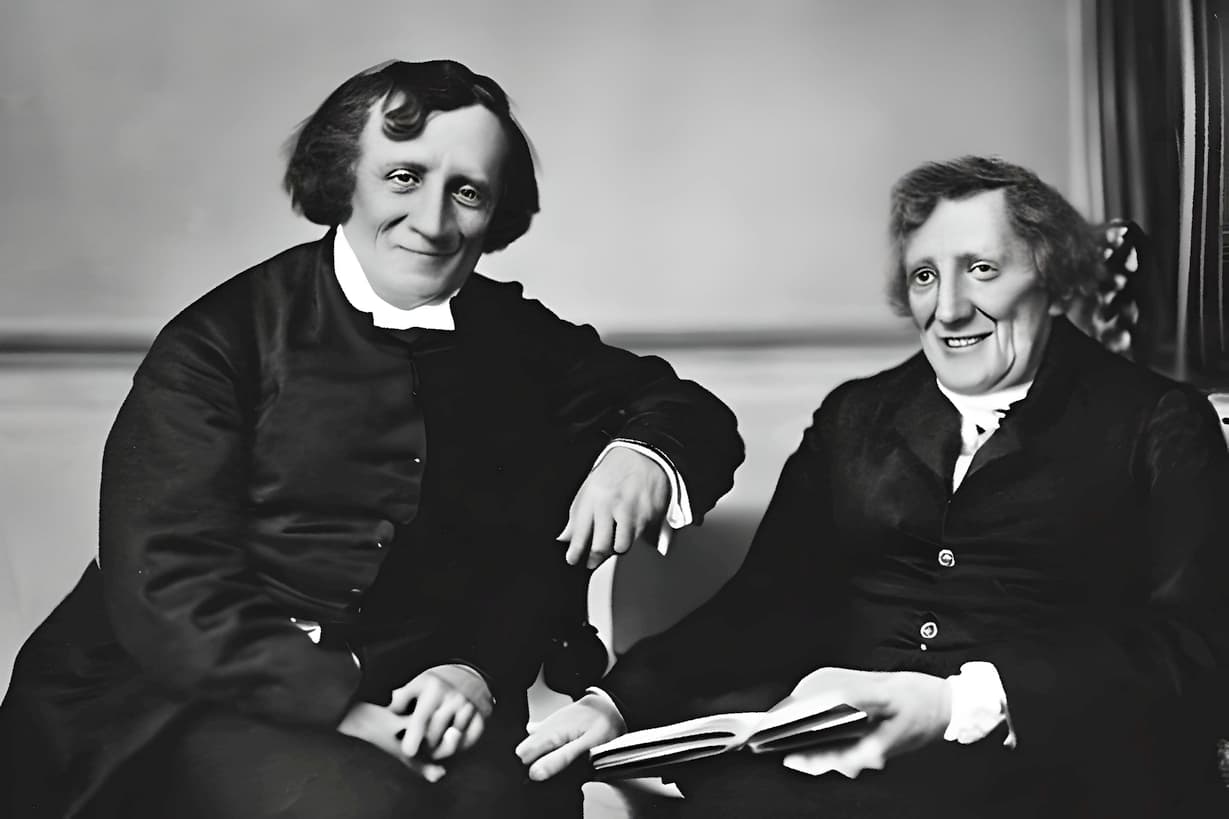The brothers Jacob and Wilhelm Grimm were German scholars who collected and published a vast array of traditional stories and fairy tales during the early 1800s. These tales have become known as the “Household Stories” or “Grimm’s Fairy Tales” and are beloved by readers of all ages. These tales are some of the best-known works in European folklore. They have been enjoyed by children and adults alike for centuries, with their classic themes of good versus evil, love conquering all, loyalty to family and friends, courage in adversity, and the power of dreams.
One of the reasons that these stories are so important for young people to read and enjoy is that they are full of important life lessons and values. The tales are sometimes twisted but often feature strong moral themes, such as the consequences of greed, the importance of kindness, and the power of love. The stories are told in a way that is engaging and entertaining, making them a great way to introduce these important concepts to young readers.
For example, in the story of “Cinderella,” we see the importance of being kind and good-hearted, even in the face of mistreatment and cruelty. Despite being treated poorly by her stepmother and stepsisters, Cinderella remains kind and helpful, and her good deeds are ultimately rewarded when she is able to attend the prince’s ball and win his heart.
In another example, the story of Hansel and Gretel emphasizes the importance of self-reliance and resourcefulness. The two siblings are able to outsmart the witch and survive in the forest by using their intelligence and creativity. It teaches the value of being cautious and aware of potential dangers. And let’s not forget “Rumpelstiltskin” – his story teaches us that sometimes it pays off more if you keep your promises instead trying cheat your way out them.
These stories are also important for young readers because they provide a window into the history and culture of the people who originally told them. Many of the stories in these Household and Fairy Tales have been passed down for generations through oral tradition, and they reflect the values and beliefs of the communities that told them. By reading these stories, young readers can gain an appreciation for the history and culture of different peoples and traditions.
In addition to their cultural and historical significance, the Tales are also engaging and entertaining and just plain fun to read. The stories are full of fantastic characters and settings, from brave princes and wicked witches to enchanted forests and magical kingdoms. The vivid imagery and imaginative storytelling of these tales can spark the imaginations of young readers, encouraging them to explore new worlds and ideas and helping create a positive association with reading and books.
Finally, the Household and Fairy Tales are a great way to encourage reading and a love of literature and to improve reading skills in young people. They may also be useful for composition writing in the student’s future. The stories are relatively short and easy to read, making them a great choice for children to successfully complete. The following 150 stories (in PDF format) are all illustrated and do not contain archaic pronouns.
- A Youth Who Set Out to Learn What Fear Was
- Allerleirauh or The Many-Furred Creature
- Bearskin
- Beauty And The Beast
- Brother and Sister
- Cherry the Frog-Bride
- Cinderella or The Little Glass Slipper 1
- Cinderella or The Little Glass Slipper 2
- Clever Elsa
- Clever Grethel
- Doctor Know-all
- Donkey-Wort
- Frau Trude
- Fred and Kate
- Fritz and his Friends
- Fundevogel
- Giant Golden-Beard
- Gossip Wolf and the Fox
- Hans in Luck
- Hans The Hedgehog
- Hansel and Grettel
- How Six Men Travelled through the Wide World
- Iron Hans
- Jack and the Beanstalk
- Jorinda and Joringel
- Karl Katz
- King Thrushbeard
- Little Louse and Little Flea
- Little Red Riding Hood 1 (happy ending)
- Little Red Riding Hood 2 (happy ending)
- Maid Maleen
- Marya Morevna
- Mother Hulda
- Mr. Korbes
- Oh, If I Could But Shiver
- Old Sultan
- One-Eye, Two-Eyes, And Three-Eyes
- Our Lady’s Child
- Pee-Wit
- Princess Rosette
- Prudent Hans
- Rapunzel
- Rumpelstiltzkin
- Sleeping Beauty or Briar Rose
- Snow-White and Rose-Red
- Snow White or Snowdrop
- Soria Moria Castle
- Stories About Snakes
- Sweetheart Roland
- The Adventures of Chanticleer and Partlet
- The Almond Tree
- The Bear and the Skrattel
- The Black Thief and Knight of the Glen
- The Blue Light
- The Brave Little Tailor
- The Bremen Town Musicians
- The Bronze Ring
- The Cat and Mouse in Partnership
- The Death of the Hen
- The Dog and the Sparrow
- The Donkey Cabbage
- The Elfin Grove
- The Elves 1
- The Elves 2
- The Elves and the Shoemaker
- The Enchanted Pig
- The Fisherman and His Wife
- The Flail from Heaven
- The Forbidden Room
- The Four Clever Brothers
- The Fox and the Cat
- The Fox and the Horse
- The Frog Prince
- The Giant with the Three Golden Hairs
- The Girl without Hands
- The Godfather
- The Gold-Chidren
- The Golden Bird
- The Golden Goose
- The Goose-Girl At The Well
- The Goose-Girl
- The Hedge-King
- The Iron Stove
- The Jew Among the Thorns
- The King of the Golden Mountain
- The Knapsack, the Hat, and the Horn
- The Lady and the Lion
- The Little Good Mouse
- The Little House In The Wood
- The Little Peasant
- The Marriage of Mrs. Reynard
- The Master Thief
- The Mouse, the Bird, and the Sausage
- The Nix Of The Mill-Pond
- The Norka
- The Nose-Tree
- The Old Man and his Grandson
- The Peasant’s Wise Daughter
- The Pink
- The Poor Man and the Rich Man
- The Poor Miller’s Boy And The Cat
- The Princess Mayblossom
- The Queen Bee
- The Rabbit’s Bride
- The Raven
- The Riddle
- The Robber Bridegroom
- The Salad
- The Seven Ravens
- The Shoes That Were Danced To Pieces
- The Singing Bone
- The Singing, Soaring Lark
- The Six Swans
- The Skilful Huntsman
- The Spindle, The Shuttle, And The Needle
- The Star Money
- The Straw, the Coal, and the Bean
- The Table, the Ass, and the Stick
- The Tailor in Heaven
- The Thief and His Master
- The Three Brothers
- The Three Children of Fortune
- The Three Crows
- The Three Dwarfs
- The Three Feathers
- The Three Languages
- The Three Spinsters
- The Turnip
- The Twelve Brothers
- The Twelve Dancing Princesses
- The Twelve Huntsmen
- The Two Brothers
- The Two Travelers
- The Vagabonds
- The Water Fairy
- The Water of Life
- The Water-Nix
- The White Snake
- The Wolf and the Fox
- The Wolf and the Man
- The Wolf and the Seven Kids
- The Wonderful Birch
- The Wonderful Musician
- The Wren and the Bear
- The Young Giant
- Thumbling the Dwarf and Thumbling the Giant
- Tom Thumb
- Tom Thumb’s Travels
- Trusty John
- Wise Folks
-love learning -your best ed lessons guide, Scott




